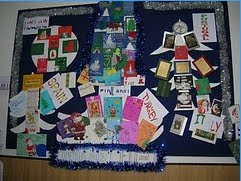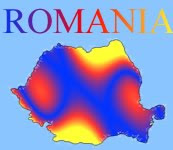The thing that really separates Romania from other European destinations is its amazing folklore heritage.
1.The folk artisans from Romania are famous for their creations: true masterpieces made of wood (icons, sculptures, dishes or furniture), textile materials (rugs, traditional masks) and ceramics.
2. The living room, locally called casa (house), is the place where the women show their aesthetic taste. The harmony of the interior is completed by the vivid colours of the textiles and of the various objects that decorate it.
 3. Maramureş is one of the few zones where the folk costume has been preserved almost unaltered by urban influences. Floral embroideries are made with red, orange, green and violet silk.
3. Maramureş is one of the few zones where the folk costume has been preserved almost unaltered by urban influences. Floral embroideries are made with red, orange, green and violet silk. Not only old people dress in traditional clothes but also “coconii” (preschool children), which explains the continued use of the costume.
Not only old people dress in traditional clothes but also “coconii” (preschool children), which explains the continued use of the costume.4. The FOLK DANCE is a very important part of the Romanian people’s life. There are many festivals of traditional dances organized every year all over the country.
5. TRADITIONS
Sorcova
Sorcova" is a special bouquet used for New Year's wishes early New Year’s morning. Children wish people a “Happy New Year!” while touching them lightly with this bouquet. After they have wished a Happy New Year to the members of their family, the children go to the neighbors and relatives.
Sorcova, vesela, Merry Sorcova,
Sã trãiti, sã-mbãtrâniti, May your health be strong
Ca un mãr, ca un pãr, And your life long: As an apple tree
Ca un fir de trandafir, As a pear stately, As a rose bush fair
Tare ca piatra, Strong as a granite rock
Iute ca sãgeata, Quick as an arrow’s shock
Tare ca fierul, Hard as an iron bar
Iute ca otelul, Tougher than steel by far
Peste varã, primavarã, Over summer, over spring,
Nici capul sã nu te doarã, May your health be great
La anu' si la multi ani ! A New Year with happiness!
“The wetting of the girls” is a custom on the second Easter Day, that symbolizes the “rebirth of life” or health keeping. The boys and young men pay a visit to their colleagues or girl-friends and sprinkle them with perfume. As a reward, they get an invitation to dinner or sweets and red eggs. There is a short poem to be told on this occasion:
“I’m the little gardener,
With a perfume in my pocket.
I’ve heard there is a flower
That is withering away.
May I water it today?”
"The Girls Fair" (Ro: Târgul de fete) It is another custom held on the “Găina Mountain”(the Hen’s Mountain), traditionally on 20th of July or in the closest Sunday to the Day of Saint Elijah. On this fair participate the girls that want to get married.
The local people believe that a marriage on this mountain brings luck and happiness.








